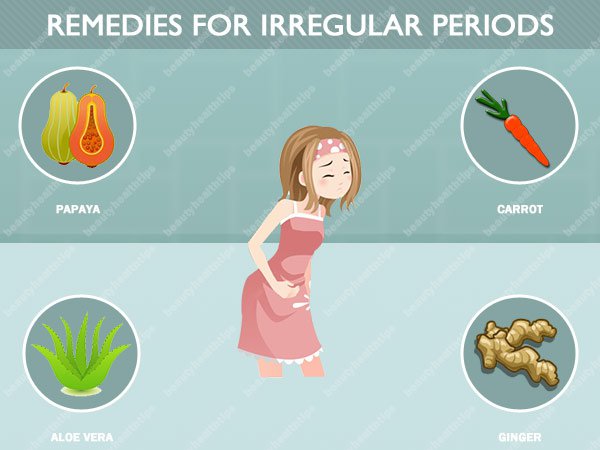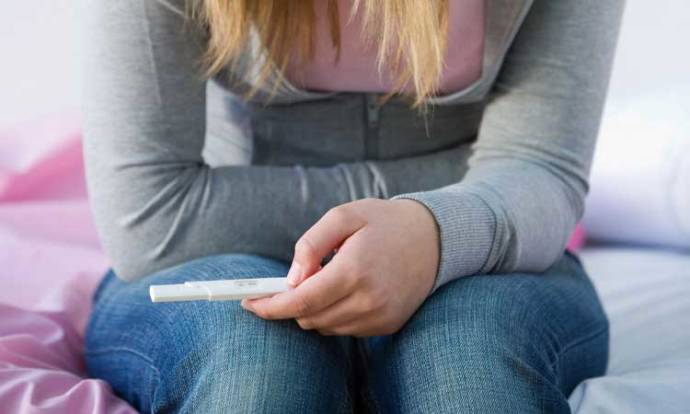Embarking adolescence might not be actually easy for the teenage girls. Menstruation and problems related to it might make it quite difficult for the girls on the verge of becoming a woman to accept all the changes. It often makes girls unsure and confused, which can even take a toll on her psychological health. It is really important that the adolescent girls get the full support from their parents, particularly their mothers at this critical stage of life and in order to guide her in the right way, it is really important for every mother of an adolescent daughter to be aware about the common menstrual problems that your daughter might face.
This article intends to promote awareness amongst the teenage girls and their families so that they can seek for the right medical assistance when needed. Read on to know the common menstrual problems that you should know about,
Premenstrual syndrome or PMS
PMS is a set of symptoms that many women face before the onset of menstruation every month. The symptoms of PMS in adolescent girls might be less or more severe compared to the PMS symptoms of a regularly menstruating women. PMS symptoms usually become evident from 2 -1 weeks before the date of menstruation. The symptoms usually vary with the changing hormonal balance in the body and eases out completely once the menstruation beings. PMS includes both physical and psychological symptoms and the ones that are most common amongst adolescent girls include,
- Severe cramps in the lower abdomen
- Bloating and indigestion
- Soreness of the breasts
- Acne
- Food cravings
- Back ache
- Depression
- Mood swings
- Anxiety
- Inability to concentrate
The exact reason of PMS is not known. However, it is believed that the changing hormonal levels in the body of the women before menstruation, is the culprit behind all these problems. The severity as well as the duration of these symptoms varies extensively from person to person. There are no exact treatments for PMS. Doctors usually suggest treatments for the individual symptoms to control the uneasiness.
If the PMS symptoms are serious in an adolescent girl having her menstruation for the first time or only for few months, it is important to consult a doctor and to get the symptoms treated, because otherwise it can affect her normal lifestyle as well as overall wellness in a negative way. So, if you find that your daughter is having any of the above problems regularly before her dates, it is best to consult a gynecologist, who might suggest some tests just to ensure that there are no other underlying problems.
Abnormal uterine bleeding
Abnormal Uterine Bleeding or AUB is a broad term that includes different types of abnormalities in menstrual bleeding. Heavy and much longer periods as well as irregular periods all are types of AUB that might look like serious issues, but often do not even need a medical treatment to get cured. The primary reason of AUB is imbalance of the hormones estrogen and progesterone. This imbalance allows more than normal thickening of the uterine wall, which leads to late or early menstruation and excessive flow for longer days.
An adolescent girl having heavy periods might find it actually difficult to live a normal life and attending school or social functions as she might soak through a sanitary pad within 1-3 hours. If the period lasts for more than 7 days, then too it can cause serious discomfort for the teen age girl. Slight hormonal imbalance is common amongst adolescent girls and hence heavy flow during menstruation is nothing unusual when it comes to the teenagers.
However, if it makes your daughter feel really uncomfortable or if it seems to disrupt her normal lifestyle, visit her doctor to get the problem treated. Though normally, there is nothing to worry about AUB, in rare cases it might be a symptom of some other underlying problems, like Thyroid problems, fibroids, cysts or other benign growth on the wall of uterus or infection of the vagina or cervix. Once you visit the doctor, she might ask for some tests to just ensure that there is nothing to worry and it is just mild hormonal imbalance in the body causing the Abnormal Uterine Flow.
Amenorrhea
The absence or sudden stop of periods is defined as Amenorrhea. If an adolescent girl does not see her first period even after she has crossed 15 years of age or even after 3 years of showing the first signs of puberty then she might be suffering from primary Amenorrhea. Genetics is often a common reason for primary amenorrhea. So, if you or your mother started bleeding late, your daughter might also have the same trend and in such cases there is actually nothing to worry about. Other causes of Amenorrhea might include, hormonal imbalance, which might need medical attention to be cured. In rare cases, some developmental problems with the reproductive organs might lead to amenorrhea and will require medical attention.
Complete absence of bleeding 6 or 3 months after starting with the first menstruation is defined as secondary Amenorrhea. The most common cause of secondary amenorrhea is unintended pregnancy, which changes the hormonal balance in the body resulting into complete discontinuation of periods.
Apart from pregnancy and hormonal imbalances, excess stress, excessive weight gain or weight loss, thyroid problems, too much of exercising without proper nutritional diet, can be the cause of secondary amenorrhea. In case of secondary amenorrhea it is important to consult your doctor at the earliest to find out the real cause of the problem and to ensure the right treatment.
Dysmenorrhea
Painful menstruation affecting the normal day to day activities can be a real problem particularly for the teenagers who have just started with their periods. The symptoms of dysmenorrhea can vary and it might affect the ability of the girl to attend school or can even hamper her sleep. In case of primary dysmenorrhea, the physical discomfort including cramps and pain usually last for 1-2 days after starting of the periods.
It is caused due to the prostaglandins. Small amount of prostaglandin might lead to light cramps but secretion of more prostaglandin can result into a range of symptoms, like nausea, headaches along with severe cramps. However, in case of primary dysmenorrhea the symptoms resolve on their own within one or two days no matter how severe they seem to be at first.
However, if the pain and cramps do not seem to ease even after 2 days, it might be caused due to some other conditions and is called secondary dysmenorrhea. Some of the most common reasons of secondary dysmenorrhea include fibroids or polyps in the uterus, endometriosis or other problems of the uterus. Pelvic inflammatory diseases can also cause prolonged pain and cramps during periods.
Irregular periods
Irregularities in periods are very common amongst girls just starting to have their periods. Hormonal imbalance in the body as well as several other factors might contribute to this problem. Usually girls do not get into a regular monthly cycle till 2-3 years after beginning of her periods. During puberty the hormonal balance of the body is changed and it takes time for the body to adjust with the new hormonal levels.
The length of the menstrual cycle of a young girl is often irregular and the normal might also vary extensively from one woman to another. So, if the menstrual cycle of your daughter is not regular for the first 2-3 years, there is actually nothing to be worried about. Get concerned only if she does not have periods for more than 3 months at a stretch. The menstrual cycle for females can extend for even 38 days or can be as short as 24 days. So, do not keep the strict normal notion of 28 days of menstrual cycle in mind as it is very likely to differ.
In case, your child is having her periods for consecutive 3 months at less than 24 days length, you should consult her doctor to ensure if she would like to prescribe her some treatments or if she will prefer to get things corrected on their own as your child age.
Endometriosis
Endometriosis might result into painful periods as well as irregular bleeding. It also causes severe pain in the pelvic region along with back ache. Dysmenorrhea might also be a symptom of endometriosis. Endometriosis is a more complicated condition, where the tissues of the uterus start to grow outside the uterine wall and might tend to cover the ovaries, fallopian tubes as well as other sections of the reproductive system present within the pelvic cavity. Endometriosis is a serious condition and needs to be treated at the earliest. However, it is not usually very common, particularly in adolescent girls.





